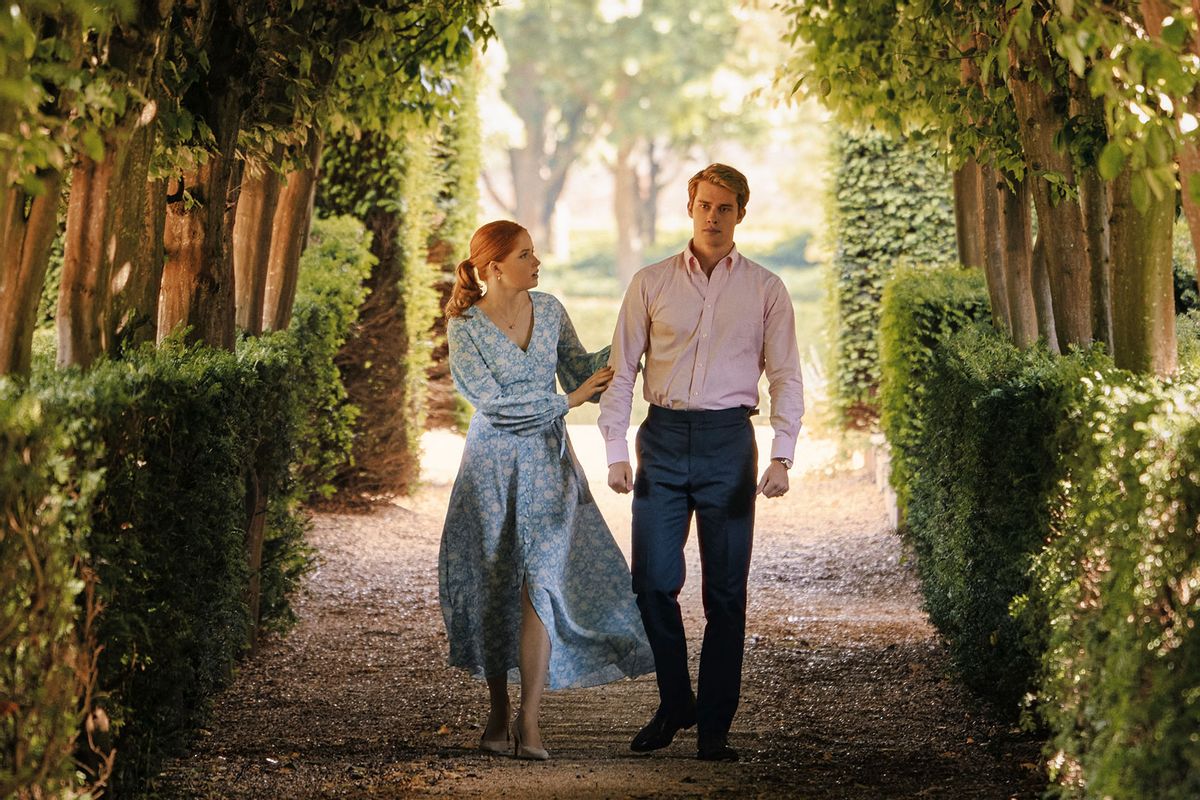Prime Video's "Red White & Royal Blue" is a smash hit – it's the No. 1 movie worldwide on the streamer and it's causing a surge of new subscribers for the platform.
The rom-com based on the novel by Casey McQuiston follows the blossoming enemies-to-lovers story between early 20-somethings Alex (Taylor Zakhar Perez), the bisexual son of the President of the United States, and Henry (Nicholas Galitzine), a closeted gay grandson of the King of England (think Prince Harry if he was queer).
Henry's struggle with his sexuality and how little he can share it with the people he loves and the public is heavily apparent in the film because his "life is the Crown." The difficulties in Henry's life stem from his obligations to the royal family as the spare to the heir. Questions about the line of succession and how Henry's sexuality affects the royal family's image are at the forefront of the conversation about identity in the film.
After Henry and Alex's relationship is outed to the world, his grandfather the King of England (Stephen Fry) insists that the country will not accept a prince who is gay. In the monarch's mind, Henry's duty is "not to [his] heart, but to [his] country," and that means continuing to uphold a "traditional royal image," i.e. a heteronormative one.
Naturally, Henry defies his grandfather, saying, "Starting today, the world will know me for who I am, and not who you want me to be."
While "Red, White & Royal Blue" highlights the difficulties of a member of the British monarchy, queerness in the U.K. is generally accepted as a cultural norm – if you're not of royal blood, that is. Just like in the United States, however, LGBTQIA+ acceptance has been a journey that has been hard won (homosexuality once was punishable by death.) Northern Ireland just legalized gay marriage in 2020 six years after Scotland, Wales and England legalized it in 2014. Civil partnerships have been recognized since 2005.
We need your help to stay independent
The larger historical context for queerness in the U.K. has changed since the establishment of the monarchy. While Henry's love for Alex was accepted by the public and begrudgingly accepted by the monarchy in "Red, White & Royal Blue," has that always been the case looking back at the various heads of state and their romantic liaisons?
This raises the question of how realistic the movie is. Which other British royals – at least those closer to the throne – have been queer? Were they closeted or out? Salon delves into history to see how Henry follows in the footsteps of real-life royals.
Despite his marriage to Berengaria of Navarre, Richard I was speculated to have been gay. He never had children with his wife but he did father two illegitimate sons. The king was speculated to have a close relationship with Philip II of France, who was an ally to Richard during the Third Crusade. Historians believed that they ate from the same plate and shared a bed. Their affair was made into the Oscar-winning film "The Lion in Winter."
King Edward II (1284-1324)
Edward II was married to Isabella of France but was openly in a long-term relationship with knight Sir Piers Gaveston. Edward and Isabella had six children together to secure their line of succession but his relationship with Gaveston continued much to the dismay of the court.
The son of Queen Mary of Scots, King James is touted as one of the most prominent queer-coded figures in British history. Though he was married to Anne of Denmark, James is speculated to have been in many relationships with men but notably with George Villiers, later made as an Earl and the Duke of Buckingham. Restoration work on James' place found a secret passageway connecting the lovers' rooms.
Queen Anne (1665-1714)
Anne was married to the Prince of Denmark and became pregnant 17 times by him but none of their children survived. The queen had a close relationship with Sarah Churchill since their childhood but it was rumored that they had a romantic relationship. Their story was portrayed in the film "The Favourite" which won Olivia Colman an Oscar. Anne once wrote to Sarah: "If I could tell how to hinder myself from writing to you every day I would. But really I cannot . . . when I am from you I cannot be at ease without enquiring after you."



Shares